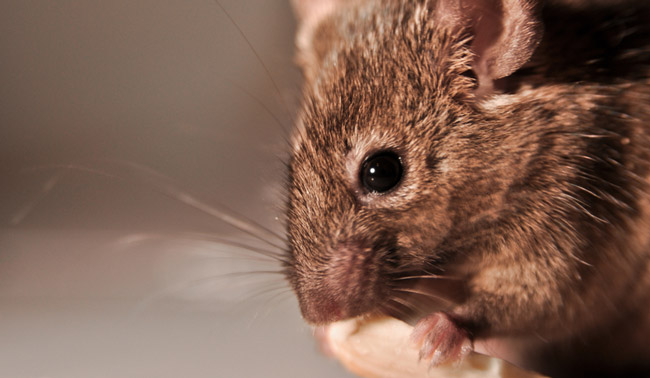Maintain Your Garage Door to Keep Mice Out
By Chris Williams on February 24, 2014.

Sometimes we forget that the garage is a part of our home. An attached garage is really just another room, but one that is more vulnerable to pests. One of the main ways that mice enter homes is through the garage. And the main way that mice get into a garage is around the garage door.
Replace and Adjust Door Thresholds and Gaskets
Garage doors rarely have a tight seal on all sides. The rubber threshold at the bottom of the door wears out and wears down and no longer seals tightly. Rubber thresholds at the bottom of the door should be replaced every 2-3 years. When installing a threshold, make sure it is long enough so that there is no space left open at the edges when the door is closed. Rubber seals or gaskets at the side of the door also get old and brittle and rarely seal well in the corners. Mice usually enter garages through gaps at the bottom where the door threshold meets (or doesn’t meet) the corner frame. If there isn’t already a small opening in this corner, a mouse can easily chew a hole through the gasket that is big enough to squeeze through.
Mice will chew through wood, plastic, and rubber, but can be deterred by metal reinforcements. You can install metal flashing at the bottom and sides of wooden garage doors. There are now specialized rubber door gaskets that are impregnated with wire mesh and can be attached to the door threshold. There are also kits with metal flashing to reinforce the door’s side gaskets or the corners of the door itself so that rodents can’t chew an entry hole. You can temporarily close any small holes by stuffing them with steel wool or copper mesh.
Don’t Forget to Mouse-Proof Inside Your Garage As Well
When trying to keep mice out of your garage, don’t forget to consider what’s on the inside of the garage, as well. You may be luring mice in with available food and lots of hiding/nesting places (in other words…clutter). If you store pet food or bird seed in your garage, make sure it’s in a container with a tight-fighting lid, not in its original bag or box. If you feed pets in the garage, don’t leave the food out overnight. Even kitty litter boxes are attractive to mice (yes, they will feed on cat poop) and should be cleaned frequently. On the other hand, cats were one of the most popular online answers as to how to rodent-proof a garage!
Finally, don’t leave your garage door open for extended periods, and especially not overnight, or your perfect door seal will be for naught.
At Colonial, we specialize in rodent-proofing homes. Give us a call. Not only can we replace or install your garage door threshold and door seals, we can inspect and rodent-proof the rest of your home as well.